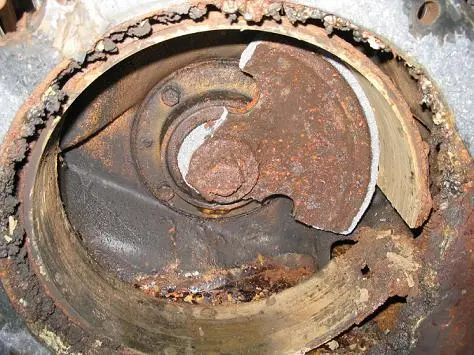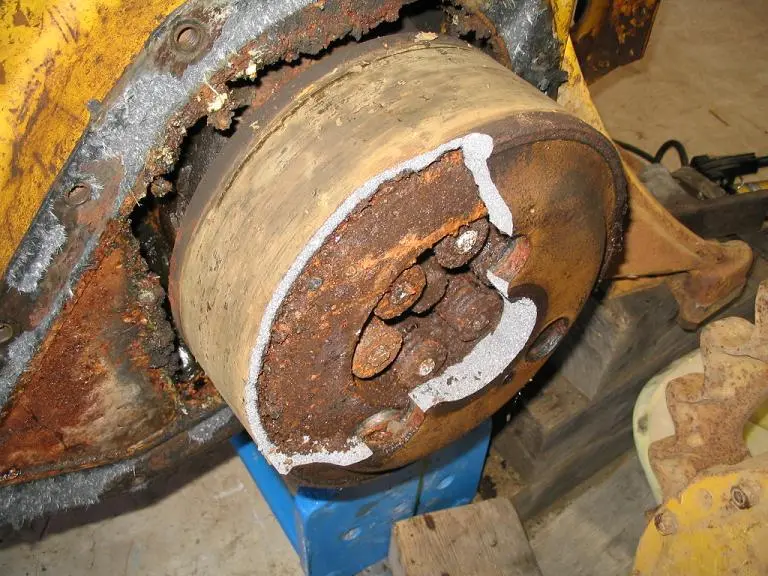The steering clutch plates are rusted into the drum. While it's possible to get them apart without breaking the drum, but it's not common. More likely you'll end up breaking the drum to get it apart.
I might just be lucky, but I've removed six D2 finals and never had to break a brake drum. It has been a few years since I last removed one, but I remember having to work my way around the final flange with thin wedges (screw drivers) to get it to start moving away from the trans housing. I did not remove the pivot shaft. I do remember it being a lot of work getting it to come free and I was nervous about cracking the final flange. I guess the other poster is saying you need to go through the brake adjustment hole and actually break the drum with a chisel? That would suck if you need to do that.
There are 4 bolts on the bottom on the final that go from the inboard side towards the outside... they're easy to overlook the first time you do one.
I'm about 50% for pulling finals without breaking the drum. Those that I did wind up breaking were a real bear to get the clutch plates out of, they were that rusted in. Since doing the last one I've wondered about filling the compartment with citric acid and letting it sit for a few days first. .anyone tried this yet?
Thanks,
I will double check but I think all the bolts are out. I hammered a putty knife in the joint and eventially put a bottle jack against the draw bar support and the bull gear housing and was able to move the housing 1/4 inch or so until it got dark. I will try some more tonight. I looked at my parts book and it appears the clutch pack will stay with the "differential" side and the brake drum should be part of the final drive side when they separate. Is that true?
What breaks on the drum when the clutch pack is rusted?
Yes, the clutch pack stays on the rear end assembly and the drum comes off with the final drive housing. What usually breaks the drum is the rust that siezes the clutch teeth into the grooves in the drum. When the drum breaks, its hub usually stays in the final drive housing and the rest of it stays stuck around the clutch.


Yes, the clutch pack stays on the rear end assembly and the drum comes off with the final drive housing. What usually breaks the drum is the rust that siezes the clutch teeth into the grooves in the drum. When the drum breaks, its hub usually stays in the final drive housing and the rest of it stays stuck around the clutch.
I tried the citric acid in the steering clutch compartments. Didn't work. Had to pull it apart and glad I did after I saw the parts inside. The release bearings were bone dry and greatly pitted.
I broke one similar to bcwayne's photo. It had water sitting in it for years.
You might have a better chance if you try to wedge it as Arthropod says and at the same time try to rotate the drum by releasing the other clutch and turning it as you wedge it it might help break the rust and work the drum off the clutch plates.
This is why I always recommend riding the brake and getting everything hot in there. As you see there is no way to get heat in there now.
Good luck and let us know what happens.
Tom